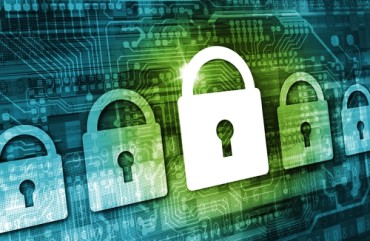
IoT platforms are being used to perform multiple functions to keep critical services running and facilities operational.
If we define critical facilities as primarily those that enable vital socio-economic activities of utmost importance–then it becomes clear that downtime is never an option in such facilities. Critical facilities take on many shapes and sizes, but all are built with uptime performance at the forefront and use the latest technology to minimize and mitigate risk to all essential tasks, whether that be financial transactions, streaming media, telecommunications interconnections, or Internet access. Increasingly, IoT platforms are being used to perform multiple functions to keep services running and facilities operational.
See also: Internet of Things Begins to Prove Itself to the Business
Critical facilities are often not just one thing, but a portfolio of facilities operating across vast swaths of geography on city, country, or global levels. With such a portfolio where thousands of locations are operating, the key performance indicator is uninterrupted uptime. The major offender of this metric is outages that take down the facilities’ activities. Though redundancy is often a tendency of a well-planned portfolio, the goal is continuous operations, 24x7x365 with no options for a glitch or downtime.
By nature, the geographically diverse characteristics of distributed critical facilities often mean that sites are located in far-flung, hard to reach areas and primarily remain unmanned. Access is often difficult, time-consuming, and expensive. Because of this, operators of such portfolios have turned to IoT platforms to allow for consolidated monitoring, management, and control of facilities en masse allowing remote maintenance, triage, and overall operational expense control over portfolios.
Interestingly the pandemic has brought forth another purpose for this style of monitoring and management. To adhere to strict social distancing guidelines, the partial shutdown of non-essential businesses has left many facilities empty. However, facility operators must continue to maintain the integrity of their facility’s HVAC systems, alarms, fire signals, entry doors, and other critical assets. So how can facility operators manage their critical infrastructure and property while facilities are vacant? IoT Platforms offer the answer.
IoT platforms adhere to social distancing rules and remote monitoring
IoT platforms are indispensable for monitoring and managing critical assets and infrastructure remotely. These are data-driven and offer a single pane of glass style remote monitoring, management, and troubleshooting across unlimited, geographically distributed portfolios of facilities. Amidst pandemics or any other disasters (earthquakes, fires, etc.), facility operators can deploy IoT platforms to efficiently triage critical assets without on-site staff. This is much more efficient than the costly dispatching of a truck roll to investigate issues or being caught off-guard about various emergencies and risks from floods to power outages to burst pipes.
IoT platforms help consolidate data from all subsystems, across one or multiple facilities, into a portfolio data-lake. They help rationalize different forms of data across varied manufacturers of equipment–compiling them all into one source of truth that enables uninterrupted monitoring and management. The data lake’s single pane of glass eases remote management and control, replacing the traditional, separate software packages from various vendors of each trade across the facility.
As a vendor-agnostic solution, IoT platforms are open-source by nature–and efficient for handling remote monitoring and management. While it doesn’t replace a BMS or other solutions, it offers an abstraction layer that manages the data. The open nature of the IoT Platform allows for adding devices across various vendors without vendor lock. Most importantly, IoT platforms can scale globally, without vast licensing expense or being tied to a single manufacturer’s solution.
Not your traditional solutions
What differentiates IoT platforms and frameworks is their seamless data delivery capabilities that utilize the portfolio of data you probably already have in your physical plant of building technologies to allow higher flexibility of management, remote access, monitoring, and control that can be easily changed by users on the fly to adapt to changing needs. The consolidated dataset built by an IoT Platform offers a wealth of analytics possibilities with the IoT platforms toolset but can also seamlessly connect to external micro-service analytics or BI engines to provide actionable analytics offered by no single trade’s data or proprietary software package.
IoT platforms also expedite rapid provisioning of newly deployed facilities to withstand disasters, emergencies, or a pandemic with no need for on-site commissioning or programming. How? IoT platforms are simply a layer on top of your existing infrastructure – without requiring replacement, rewiring, or ripping out of existing systems. They are simply an abstraction of data connectivity that can be easily added. Facility operators deploying an IoT platform can access one source of actionable information and cost-effectively, and far more efficiently, monitor and protect their portfolio assets and operational expenses with full control and management of all their critical infrastructure remotely.
With a rapidly expanding digitized world requiring always-on systems, resilient operations are mandatory in managing distributed critical facilities. And an IoT platform is the most cost-effective, efficient, integrated technology solution to harness valuable data from all connected assets and transform it into actionable business decisions to ensure uninterrupted service and resiliency. Can your critical facility afford the lack of such enablement?



























